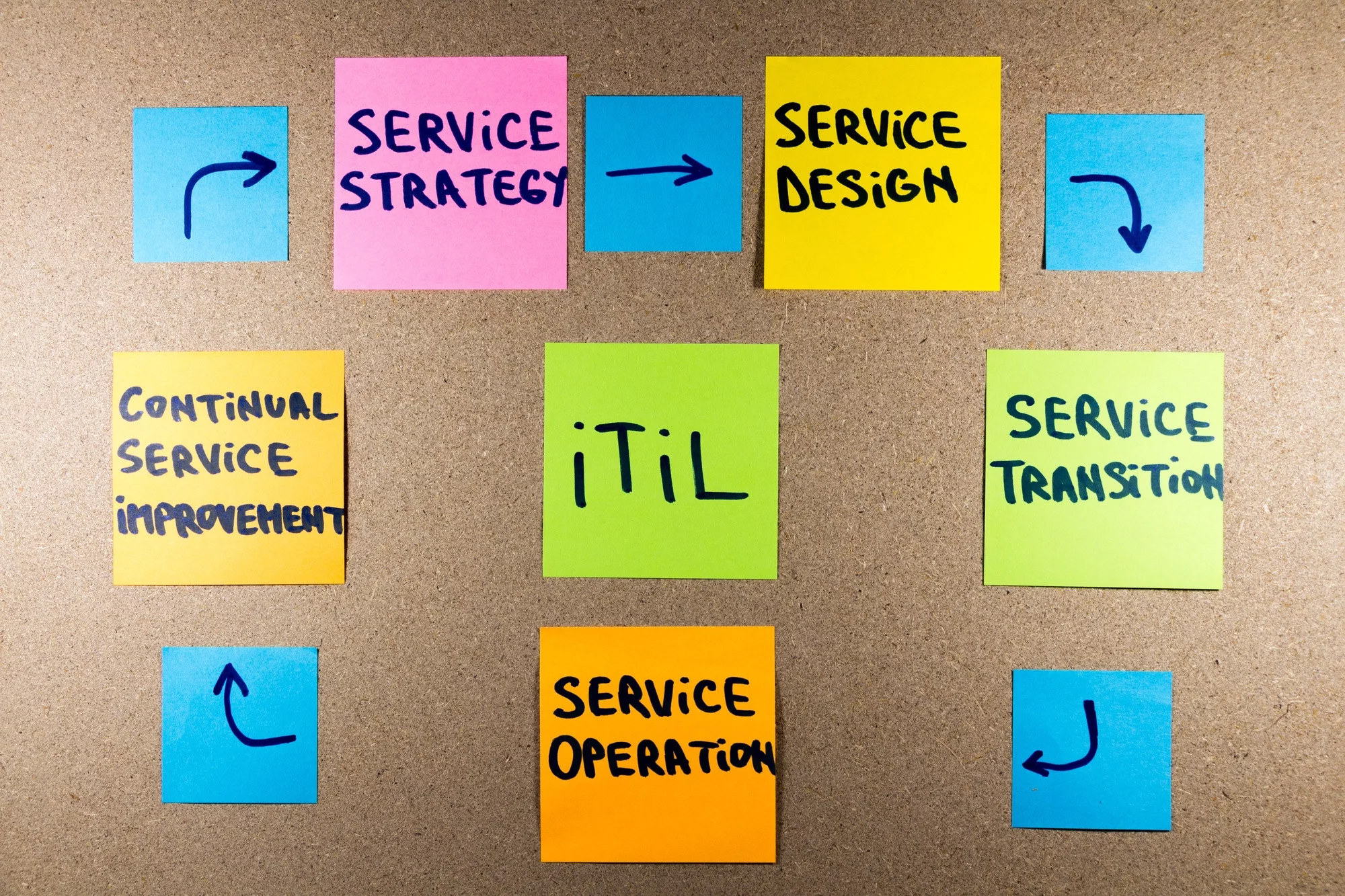
The Ultimate Guide to ITIL Best Practices & Standards
Posted by Walid Abou-Halloun Date: Apr 3, 2018 3:00:59 AM
Are you in the business of delivering IT services? How do you know if you’re meeting the highest standards and following the best practices?
The greatest repository of IT best practices and standards, the IT infrastructure library (ITIL) will promote success for your business if utilised properly.
Let’s take a look at how using ITIL can help your business in a defining way.
The ITIL Defined
By definition, the ITIL provides the most comprehensive library of frameworks and strategies for providing the best IT service. It is continuously redefined over time, adding in the latest tips and tricks for best practices and standards.
Each revision covers the stages and processes of the lifecycle of IT services, with primary focus on its integration in businesses. The ITIL is not just a library of books, it also provides certifications.
The goal of the ITIL is to aid businesses with IT practices such as managing risk, helping build customer relationships, and creating a good IT environment and infrastructure.
A Brief History of ITIL
This great resource of IT practices is developed by the Central Computer and Telecommunications Agency (CCTA) in Britain in the 1980s. Currently, the ITIL consists of five books, but when it was first created, it had more than 30 books in a volume.
When it began, it had a compilation of IT best practices in one place that could aid government choices in IT procedures. After they put it together, the government realised it would be beneficial to share itwith the private sector and public organisations selling IT services.
The Seven Books of ITIL
Now that we know what the ITIL is and why it is developed, let’s take a look at the best practices and standards that make up the book.
In 2000, the original 30 books were condensed and cut down to only seven books. These seven books included the most important practices in IT, namely:
- Service Support
- Service Delivery
- Planning to Implement Service Management
- ICT Infrastructure Management
- Applications Management
- Security Management
- The Business Perspective
While these books provided a great framework for ITIL best practices and standards, they further reduced it to five books. Each of these books narrowed its focus on IT tools, processes, and standards.
Now, what do these five books contain in detail?
The First Book
All about service strategies, the first book helps businesses with their company objectives, goals, and strategies to help maximise and improve their customer support.
The sections cover IT management on service strategy, services, finance, demand, and business relationships.
The Second Book
The second book is about service design. It helps businesses develop a full business plan based on the RACI matrix, which stands for Responsible, Accountable, Consulted, and Informed. This is primarily the basis to build business objectives.
The sections in this book cover design coordination, service catalogue and service-level management, along with capacity, service continuity, security, and supplier management.
The Third Book
Discussing about service transition, the third book lays out the day-to-day maintenance for IT services and provides advise on project development.
The book features sections in change management and evaluation, knowledge management, transition planning, service asset and configuration, release and deployment, and service validation with testing.
The Fourth Book
Focused on service operation, the fourth book contains one of the most important ITIL best practices and standards. How do you provide the best service for end-users? What are the ways to meet service expectations? This book discusses them all, along with balancing cost and locating issues.
Processes and functions in this book are divided into two sections. Among the topics clustered in the process section are event, access, problem and incident management, together with request fulfillment. Meanwhile, the functions section covers technical, application, and IT operations management alongside the service desk.
The Fifth Book
The last book in the ITIL best practices and standards volume talks about continuous service improvement. It helps provide steps for businesses to keep improving their processes and services over time.
What are the seven steps for improvement, according to the fifth book?
- Identify the strategy your business needs for improvement.
- Define what improvement measurements you will take.
- Gather data.
- Process data.
- Analyse data.
- Present the information to be used.
- Implement action for business improvement.
Putting ITIL Into Practice
Implementing ITIL best practices and standards into your business policy takes some time, but it’ll be well worth it in the end.
Start with your IT personnel. Have them read and study the books and work from there. Making them familiar with the know-hows of the ITIL best practices and standards will help convince upper management to support the next steps to take.
The ITIL doesn’t just provide books to study, it also deals with business consulting and training for IT staff. Even more so, it provides certifications.
Getting ready to implement ITIL in your company? A few questions to answer first:
Should I get certified?
As mentioned, ITIL provides accreditation and certification for users. There are five levels of certification your IT personnel can earn: foundation, practitioner, intermediate, expert, and master.
An ITIL best practices and standards certification helps prepare staff to use the framework laid out in the series of five books.
Learning the IT vocabulary needed to properly present issues and solutions is also beneficial in solving problems quickly. It puts the IT personnel and the management in one page to avoid miscommunication, while allowing collaboration to get things done more efficiently.
How will ITIL help my company?
Not only does ITIL provide a great wealth of knowledge for the IT support individual, it also has a variety of other benefits.
First, knowing the ITIL standards helps businesses respond to IT support tickets in a timely manner. Service is improved drastically because they will have a plan and strategy in place to tackle an IT issue. This helps the company manage their risk while saving a significant amount of money.
Second, ITIL aids businesses to reduce their overall IT costs, and improve their services because, well, they would know the best and proven IT practices. Ultimately, businesses improve their customer relationships and support.
Speaking of that, the third benefit is increased customer satisfaction. When service is delivered with a highly professional approach, both parties are satisfied. It is a chain reaction, really.
Fourth, application of ITIL helps improve productivity because IT personnel and management are able to use their skills, experience, and knowledge learned in the series of books. Not only the customers are happy, but the staff and the management as well.
Lastly, knowing the ITIL best practices and standards is a big advantage when dealing with risks and avoiding IT service disruption and failure. When there are no obstacles, best services are delivered.
In general, guidelines are established by developing a cost-effective procedure and building an infrastructure that promotes company growth.
What is the cost of ITIL?
The cost of ITIL can vary depending on the type of purchase. You can purchase the ITIL book as a PDF to view online and print, as an ePub, an online subscription, or an actual hardcopy.
The books can be purchased separately or along with a training program, which changes every year. Each foundational training course goes on for two days. This can stretch up to a week or more when going for the higher levels.
Additional cost may include restructuring of IT frameworks to meet the guidelines laid out in the ITIL book. Or there may be a required software first before the IT staff and help desk can proceed to giving the best customer support for end-users.
If you haven’t got a software that has built-in ITIL practices yet, then the next smart move might be to purchase one.
The Best Framework For Your Business
You’ve heard all about the ITIL best practices and standards for your business. As you can see, your IT company can benefit a lot from having this knowledge. Not only can it save the company money, but it can ensure better customer support, and be able to resolve IT problems without delay.
If you’re interested in learning more about other ways to improve your IT business practices, we can help you make that happen.
Contact us today to get
started.




